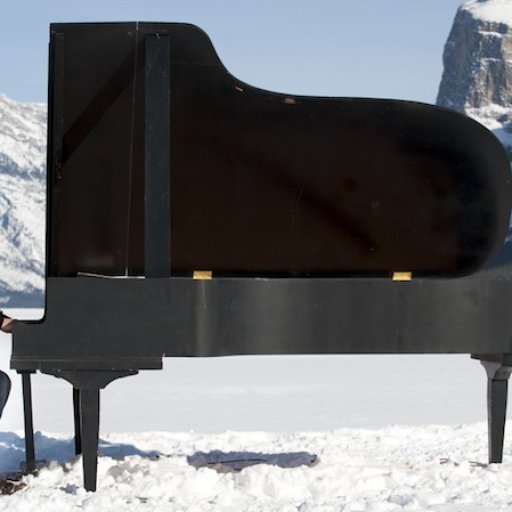Birgir Andrésson
One of Iceland's best-known contemporary artists, Birgir Andrésson's work uses conceptual strategies to explore aspects of Icelandic culture and national identity. Raised in a home for the blind as the sighted child of blind parents, Andrésson is particularly attuned to the relationship between language and perception.
A signature element in Andrésson's work is the use of color, in particular the set of colors the artist designated as being uniquely "Icelandic" in the 1980s. Creating a fictional Pantone color set supposedly inspired by the natural environment and surroundings of Iceland, Andrésson often displayed them as large-scale wall paintings featuring a block of color with its number and title, resembling an amplified version of a color swatch, the paintings playfully commenting on popular representations of Iceland. Andrésson has used these colors as a kind of visual language in itself, assigning Icelandic colors to existing cultural artifacts, such as classic black-and-white Hollywood films in the series Black and White Classics in Icelandic Colors. Similarly, he created a series of portraits in which individuals are represented through textual descriptions, drawn from sources such as reports of criminals and missing persons, rendered in the same style as the Icelandic color swatches.
Andrésson represented Iceland …
One of Iceland's best-known contemporary artists, Birgir Andrésson's work uses conceptual strategies to explore aspects of Icelandic culture and national identity. Raised in a home for the blind as the sighted child of blind parents, Andrésson is particularly attuned to the relationship between language and perception.
A signature element in Andrésson's work is the use of color, in particular the set of colors the artist designated as being uniquely "Icelandic" in the 1980s. Creating a fictional Pantone color set supposedly inspired by the natural environment and surroundings of Iceland, Andrésson often displayed them as large-scale wall paintings featuring a block of color with its number and title, resembling an amplified version of a color swatch, the paintings playfully commenting on popular representations of Iceland. Andrésson has used these colors as a kind of visual language in itself, assigning Icelandic colors to existing cultural artifacts, such as classic black-and-white Hollywood films in the series Black and White Classics in Icelandic Colors. Similarly, he created a series of portraits in which individuals are represented through textual descriptions, drawn from sources such as reports of criminals and missing persons, rendered in the same style as the Icelandic color swatches.
Andrésson represented Iceland at the 1995 Venice Biennale and in 2006, the National Gallery of Iceland hosted a retrospective of his work. Recent exhibitions include solo shows at the Museum Abteiberg in Mönchengladbach, i8 Gallery in Reykjavik, the Foksal Gallery Foundation in Warsaw, and Nils Staerk Contemporary Art in Copenhagen, as well as a two-person exhibition with Poul Gernes at Sean Kelly Gallery in New York in 2011.
Icelandic College of the Arts & Crafts, Reykjavik, Iceland, 1977





